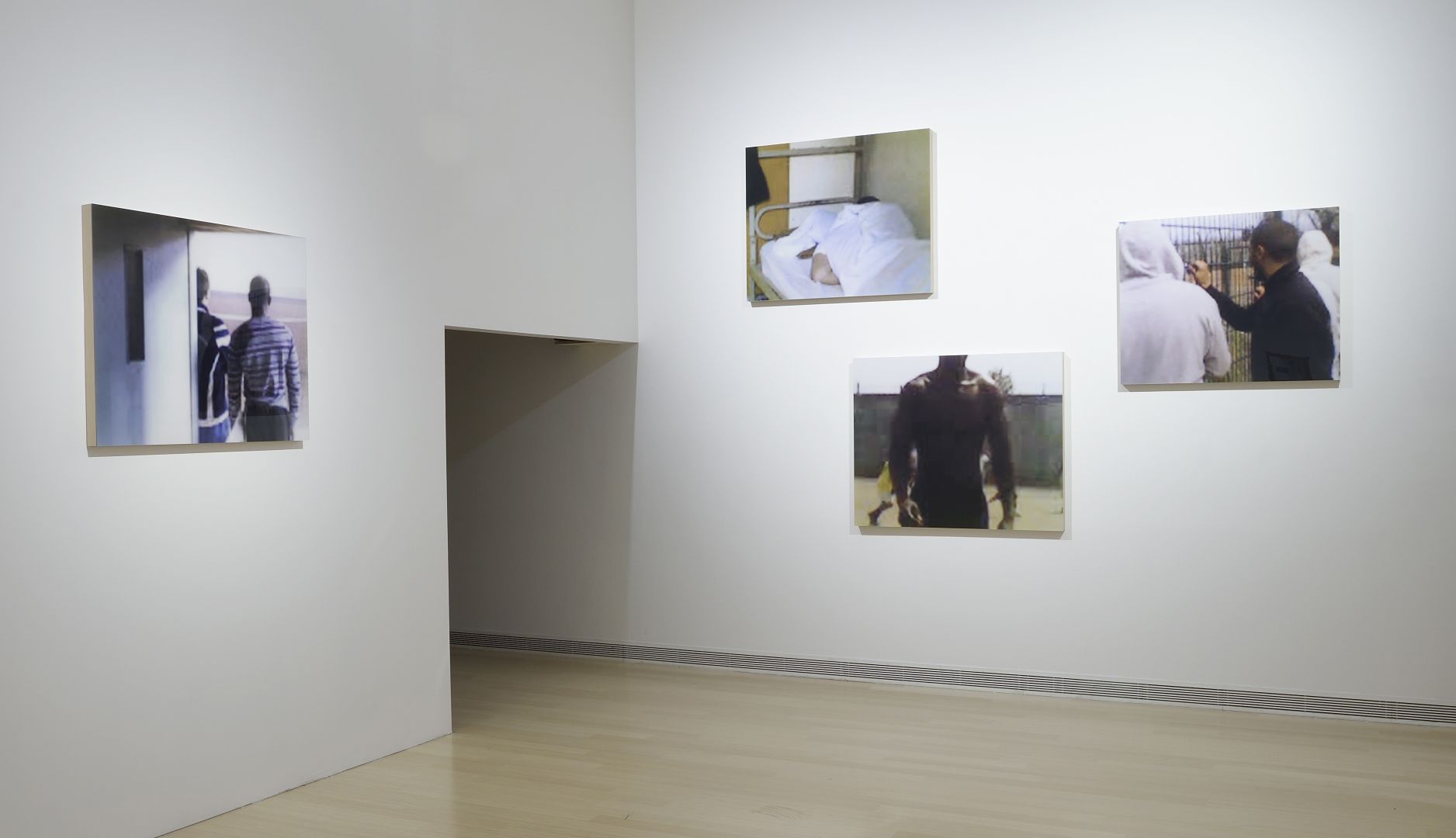Mohamed BOUROUISSA
Time Out
Mohamed BOUROUISSA
Time Out, untitled (Temps mort, sans titre) n° 32, 2008
Silver print on Diasec, mounted on aluminium – 92.5 x 114 cm; Ed. 2/5
Time Out, untitled (Temps mort, sans titre) n° 83, 2008
Silver print on Diasec, mounted on aluminium – 86 x 106.4 cm; Ed. 4/5
Time Out, untitled (Temps mort, sans titre) n° 43, 2008
Silver print on Diasec, mounted on aluminium – 86 x 106.4 cm; Ed. 3/5
Time Out, untitled (Temps mort, sans titre) n° 38, 2008
Silver print on Diasec, mounted on aluminium – 97 x 119.5 cm; Ed. 2/5
Courtesy of the artist and galerie kamel mennour, Paris
Photo: József ROSTA © Ludwig Museum – Museum of Contemporary Art
Mohamed Bourouissa could be described as an active witness of his time: known for his photo-based installations, the artist is primarily interested in leaving a mark for his generation. He studied technical drawing and, alongside his considerable activity as a graffiti artist, completed a degree at the Paris College of Art, a dream that had previously seemed out of reach for him. Since a large proportion of his classes were devoted to a strongly Western-centred art history underpinning a “white narrative”, Bourouissa found it a more meaningful vocation to record his own environment, the everyday life of the Parisian suburbs, and to visualise the poetry of the street, a largely avoided medium. In his works, he often confronts individuals with – dress, social, official – codes, crossing the divide between “high” and “local” culture, a divide he finds unintelligible: he rewrites (art historical) codes through his own cultural aspects. Most of his works act as catalysts in their context, using the overflow of stereotypes pouring forth from the press to make the spectator challenge them. His Time Out was a two-phase work. First, the photographic elements were completed. It all started with an MMS sent to him by a friend who was in prison. Bourouissa asked him – still communicating via SMS – to send more documentation from inside. He then reworked these: the drawings he sent back inspired the set-ups his friend then made inside. On the one hand, the process was about questioning the authenticity of authorship, and on the other hand, it intended to capture the mental space and loneliness of confinement. This was followed by a second phase in 2009: when his friend was about to be released from prison, Bourouissa asked him to slip the unauthorized device to a fellow inmate, who would take on the role of intermediary. The correspondence between the incarcerated and the free man was a learning process, resulting in double authorship, now in the context of video documentation. This performative approach in fact elevates the work to the status of resource, since it opened up a new perspective for the prisoner in confinement, to whom the plot of broadcasting gave new purpose in a state of timelessness.
KÁLMÁN Borbála
